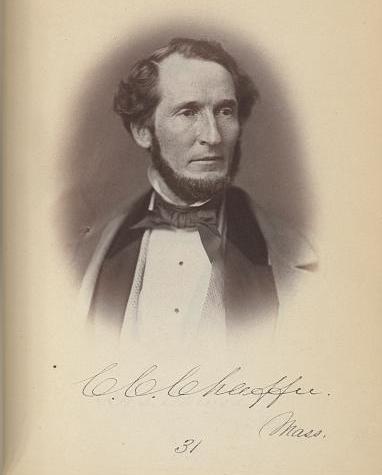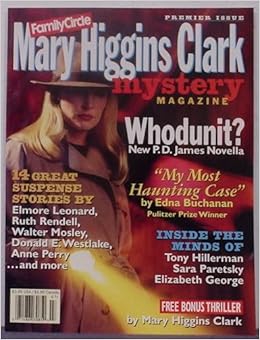 Have you ever told a published author what was wrong with their book? Max Allan Collins has told the story of a lady coming up to him at a mystery con and said,"Want me to tell you tell you what's wrong with your book?"
Have you ever told a published author what was wrong with their book? Max Allan Collins has told the story of a lady coming up to him at a mystery con and said,"Want me to tell you tell you what's wrong with your book?"Mr. Collins said, "No." and walked away.
He wasn't being rude. It's just when the book is already published if he made a major mistake, it's just too late. The book is already published. There is just nothing to be done at this point.
I've never said anything like that to an author but I did tell two authors at two different times they had made one small error in their book. I wasn't trying to be a smart-alec but honestly thought they might want to know if they had made an error so that next time they wouldn't make that same error. But this was when I had only published about 12 or 15 short stories and had NOT published a novel. Not sure they appreciated my input.
The first author I said something to was Ed Gorman. I don't remember when it was but I think it was one of his short stories. It was set in the fifties and dealt with a high school girl wearing blue jeans or Levis. He writes about the girl buttoning her jeans in front. I don't know about where you lived in the early to mid-fifties but where I lived in a small town, girls didn't wear front button or zipped jeans. Girls wore jeans that buttoned or zipped on the left side. We called them Girl's Jeans. And Boy's Jeans buttoned and/or zipped in the front. The exception was "loose girls" might wear Boy's Jeans. And everybody knew she was loose. It was just understood that it was easy to get to second or third base with her. I went to school with a girl who wore Boy's Jeans and she had a bad reputation. I'm not sure Mr. Gorman appreciated my insight. He did thank me, but he probably was being polite. The thing is, nice girls in the fifties didn't wear pants very often, even if it was cold.
I don't know whose idea that was. Probably some man because it was many years before women wore pants even way before the fifties. We probably were very lucky to have managed to wear them in those years. When my daughter was in the first or second grade, on a very cold day I sent her to school in a dress and a pair of long pants. The school sent her home, this was in Austin, Texas, in the mid-sixties and told it was against school policy. It was okay if she wore leggings or tights under her dress, but not pants. That was stupid. When it's cold you really need tights and pants when you're little. They changed the dress code after that, I'm sure other mothers complained.
The other author I gave corrective information to was a man who shall remain nameless but he wrote books set in Michigan. He had part of his book set in Texas and he called the highway patrol, THiP. Like they call them in other states, notably in California because of the "CHiPs" television show. In Texas, the highway patrol is named Texas Department of Public Safety. And we do call them DPS for short. This author, did thank me, but in another book he did the same thing so guess he didn't believe me or didn't care.
I know it probably doesn't matter but I have this weird feeling that any little detail that jars a reader out of the fiction or fantasy of the book is just not good. I'm reasonably sure that most of us try very hard to make sure what we write is a true and correct as we can make it.
One thing that bugged my husband no end and he let authors know it every chance he got was when an author uses the word cement as a synonym for concrete. And author after author does it. I guess they feel that it doesn't matter to most people. And to most people it doesn't. But to Elmer Grape who was in commercial construction for thirty years and worked with concrete all those years, it just bothered him. CEMENT is the powder that is mixed with sand, gravel and water to make concrete. The finished product is CONCRETE. Sidewalks, platforms, houses, streets, all are made of concrete.
I actually blame the use of cement as a synonym comes directly from THE BEVERLY HILLBILLIES. They all called their swimming pool the CEMENT POND. That was the beginning and it caught on and became one of those interchangeable words.
This idea grabbed my attention a few days ago when I was reading a book by a famous best selling author. He had a book set in Texas where a girl, maybe around 14-15 years old wearing a strapless sundress to school. I really don't think so. However, maybe I'm behind times now and perhaps it's allowed nowadays. It only jarred me for a few moments and I went ahead with the intriguing story, but it did stick in my mind. Anyway, I didn't write and correct him. And I didn't even call the school district to see if I was right.
However, I thought this might be a good time to write this up in my column. It only takes a few minutes to Google something to find out what the proper word is for what you write. Even better if you can talk to a person who is in the profession you are writing about. Find out if you have to or ask them for the proper jargon. It might not seem too important to you but you don't want a reader throwing your book across the room in disgust because you used "Cement" instead of "Concrete."
And maybe even if you really do want to tell an author what's wrong with their book. They might not appreciate it. A little minor correction? Okay, maybe that's not too bad. But don't blame me if someone says to you...Oh, no! You Did..n't.



























